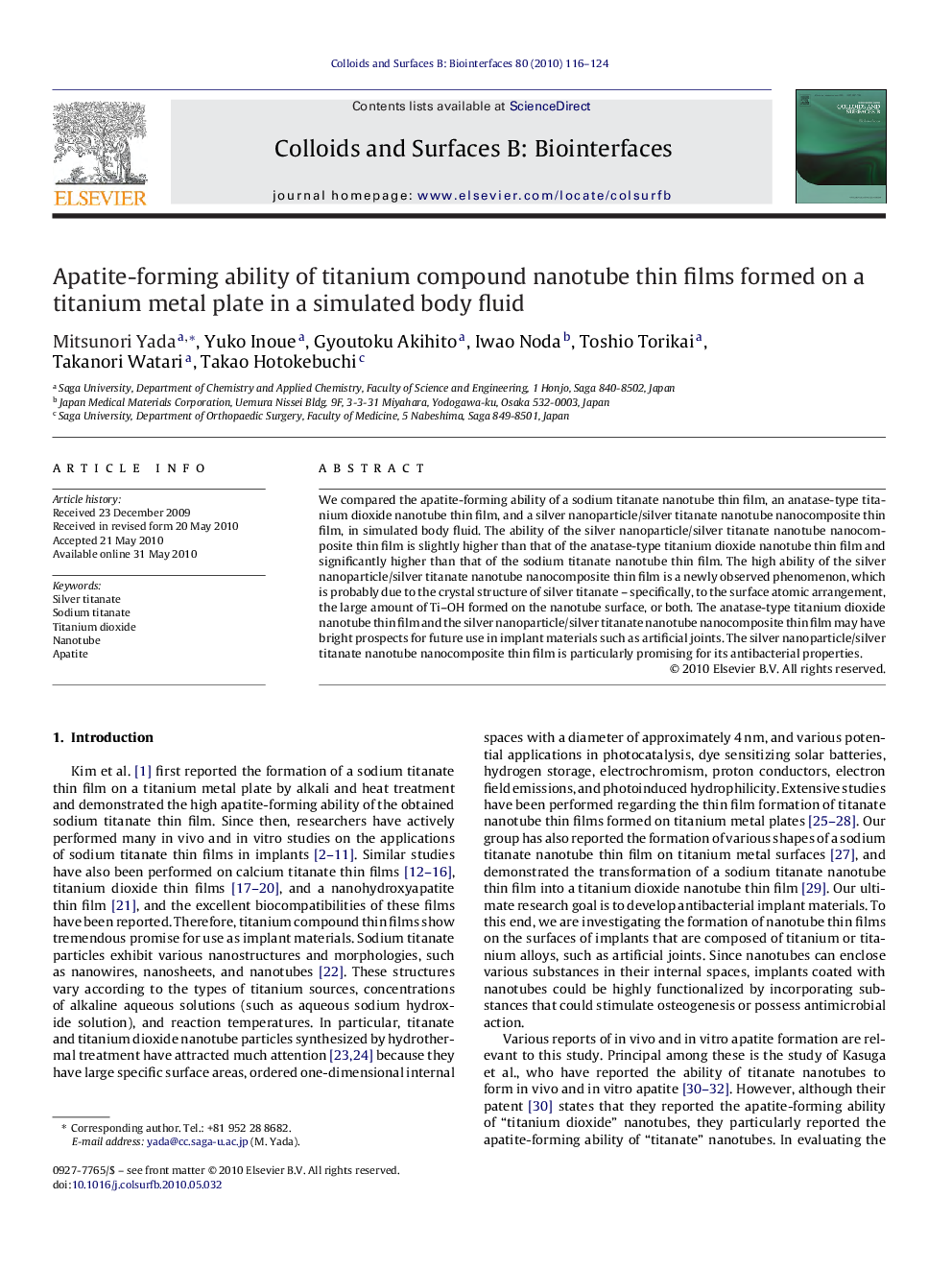| Article ID | Journal | Published Year | Pages | File Type |
|---|---|---|---|---|
| 601774 | Colloids and Surfaces B: Biointerfaces | 2010 | 9 Pages |
We compared the apatite-forming ability of a sodium titanate nanotube thin film, an anatase-type titanium dioxide nanotube thin film, and a silver nanoparticle/silver titanate nanotube nanocomposite thin film, in simulated body fluid. The ability of the silver nanoparticle/silver titanate nanotube nanocomposite thin film is slightly higher than that of the anatase-type titanium dioxide nanotube thin film and significantly higher than that of the sodium titanate nanotube thin film. The high ability of the silver nanoparticle/silver titanate nanotube nanocomposite thin film is a newly observed phenomenon, which is probably due to the crystal structure of silver titanate – specifically, to the surface atomic arrangement, the large amount of Ti–OH formed on the nanotube surface, or both. The anatase-type titanium dioxide nanotube thin film and the silver nanoparticle/silver titanate nanotube nanocomposite thin film may have bright prospects for future use in implant materials such as artificial joints. The silver nanoparticle/silver titanate nanotube nanocomposite thin film is particularly promising for its antibacterial properties.
